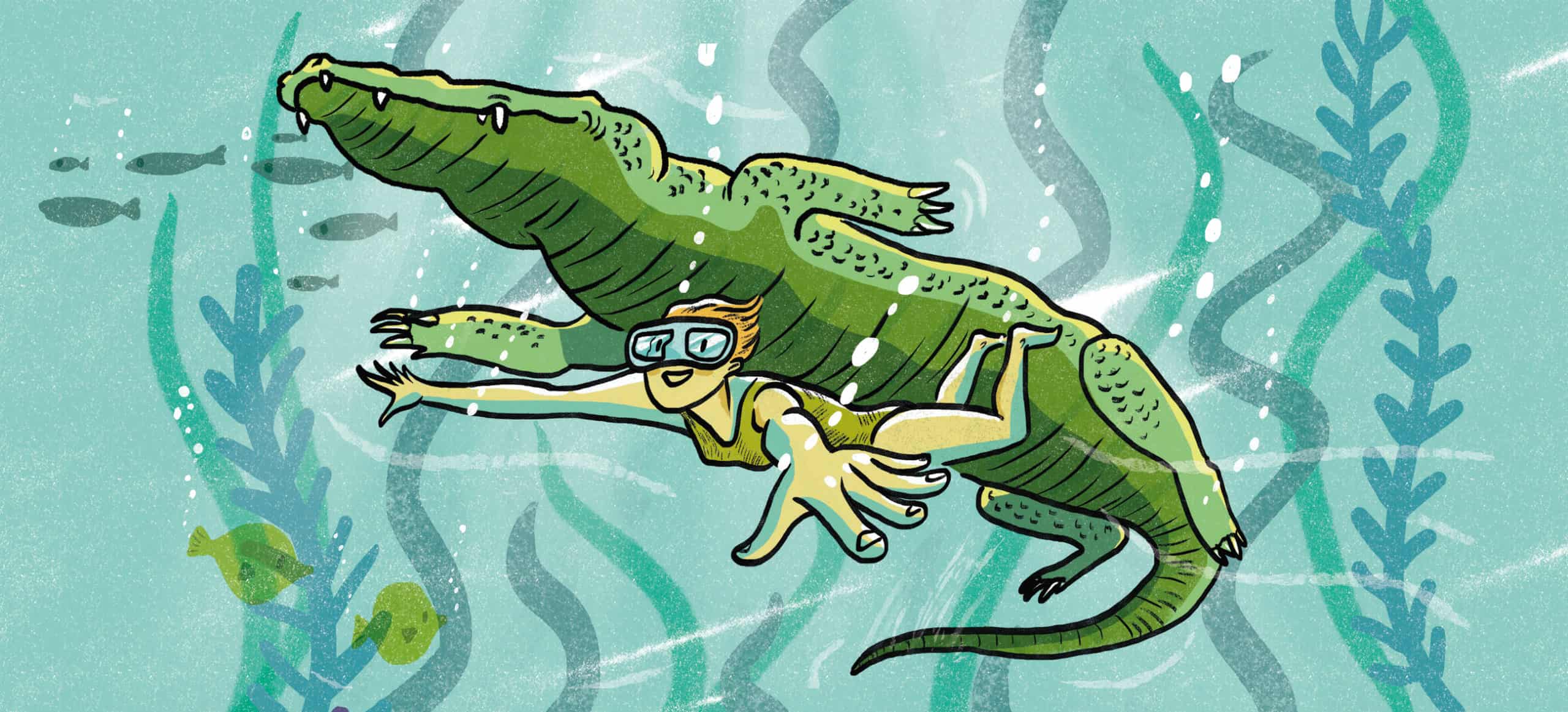
SEE YOU LATER, ALLIGATOR!
RENAE SHADLER: HORACE
Elisabeth von Mosch works as a freelance illustrator and graphic designer in Berlin and Potsdam. For explore dance, she went to see the play in a Potsdam elementary school and shows us how Renae Shadler and Horace face their underwater adventure together.
Illustration by Elisabeth von Mosch. Text by Oskar Smollny. | 18. January 2023
“A duet with a crocodile.” With this description, most people probably think of a tamer or the famous animal explorer and adventurer Steve Irwin, rather than contemporary dance. And one thing they have in common is immediately apparent: choreographer Renae Shadler, like Irwin, who became known as “The Crocodile Hunter”, is from Australia. Her piece HORACE negotiates the wonderfully personal relationship of the crocodile and (imaginary) childhood friend to the dancer herself. Instead of taking the children out of their familiar environment, Renae Shadler’s pop up piece, together with the reptile’s skeleton, transform the classroom into an underwater world.
…in a while, crocodile!
How do you capture the dynamics and movement of a contemporary dance piece and translate them into an illustration? Elisabeth von Mosch manages exactly that: finding a balance between staying true to the piece on the one hand and on the other hand the interpretation of the relationship between Renae Shadler and the second, eponymous protagonist of her piece: the crocodile Horace. Here, the crocodile is not “humanized”. A possibility that would have been quite conceivable given the illustrator’s comic drawing style. In the piece, the boundaries between the dancer and choreographer and her dance partner, who is present only as a skeletal skull, become blurred. Shadler lends movement and body to the crocodile, connecting her own story with that of the skeleton, which are inevitably interwoven anyway.
under water
In the world of Elisabeth von Mosch’s painting, Renae Shadler and Horace are a synchronized swimming team. Surrounded by a great diversity of aquatic creatures and plants visible in the background, they blend effortlessly into this habitat. Shadler’s facial features, easily recognizable as joyful despite the simplicity of the drawing, reflect the spirit of discovery also evoked in the children during the performance. Nevertheless, neither Shadler nor Horace are detached from their environment and pure observers, but are a central part of this underwater image. This sense of belonging, this cycle, becomes just as clear in the piece as it does in Elisabeth von Mosch’s illustration. And likewise, this drawing finds its way back into the cycle of the piece’s (re)development as a future part of Horace’s accompanying educational material for the young audience.










